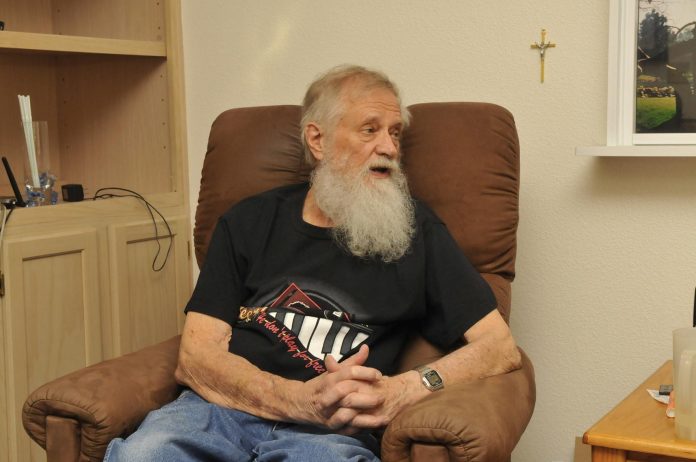This weekend, Cottonwood resident George Skoblin was laid to rest in a service Saturday, Sept. 24, at Westcott Funeral Home.
On Feb. 10, we published in all three of our newspapers a letter to the editor Skoblin sent us about his life suffering from amyotrophic lateral sclerosis, aka Lou Gehrig’s disease, an incurable progressive neurodegenerative disease in which the mind remains intact, but the body’s functions systematically begin to shut down. Given treatment like feeding tubes and breathing machines, ALS sufferers can survive for years before the body simply fails leading to death, most likely from asphyxiation.
However, Skoblin did not want to endure years of suffering, trapped in a body unable to function on his own. He wanted to die.
We interviewed him at the assisted living section of Cottonwood Village, and published the interview in our newspapers on March 9.
Skoblin held nothing back, wanting to discuss his life before and after ALS, his then-frail condition, his impending death, his fear of the means to take his own life in various ways and, most importantly, the fact Arizona has no laws permitting medically assisted suicide, which would allow him to die on his own terms. His body is his own and should he choose to cease its function, he felt he has that right without any other person’s interference.
While advocates prefer the term “death with dignity,” the AP Stylebook expressly uses “medically assisted suicide,” reserving the phrase “death with dignity” for direct quotes and in the formal titles of organizations or legislation.
Skoblin sent us another letter in July, announcing that he would cease eating on July 28 and starve himself to death: “‘Death with dignity’ is not yet legal in Arizona, so I will now take the only option I have ….
“I do not have access to sleeping pills, guns, or other means of life termination. So my only option right now is to stop eating, before having the need of a feeding tube. Will that be humane? No, but it will be legal. Even though it will be a lengthy and agonizing process.”
Skoblin consented to another interview, but was often asleep when our reporter arrived.
It took Skoblin 29 days to die.
Confronting death makes us uneasy because we must confront the terror of our own inevitability. Some higher species may know what “death” looks like, but as far as we know, no other animal on Earth has the capacity to understand its own self-mortality. “Memento mori” is a uniquely human concept.
Religion notwithstanding, we build monuments, cities and legacies to both improve our lives but also to exist, somehow, after we die. Art is perhaps our purest attempt at create some form of immortality.
An old adage states: “Do not remember how he died, but how he lived.” Skoblin showed us both, and brought to the fore questions about how one confronts death and the morality and legality of medically assisted suicide.
For telling his final story and forcing our community to start the conversation, we are in his debt. Rest in peace, Mr. Skoblin, guiltless, weightless and free.



